When the first blurry image of the #10260 LEGO Creator Downtown Diner appeared, many LEGO fans dismissed it as fake, or possibly something done by one of those obscure Chinese construction toy brands. One of the main reasons the set was not believed to be real is because the included minifigures had a wide variety of facial expressions (minifigs in all previous LEGO Creator Modular Buildings come with classic smiley faces). And the second reason was the teal arch on the facade of the building (teal has been retired by LEGO over a decade ago). So, while LEGO fans always eagerly await getting even just a glimpse of the next LEGO Modular Building, the first picture of the Downtown Diner was received with caution and even suspicion. Fortunately, the cool welcome didn’t last long, as shortly after LEGO officially announced the set (see: LEGO Modular Building Downtown Diner Coming!). So, let’s talk a bit about the most unusual features. 🙂
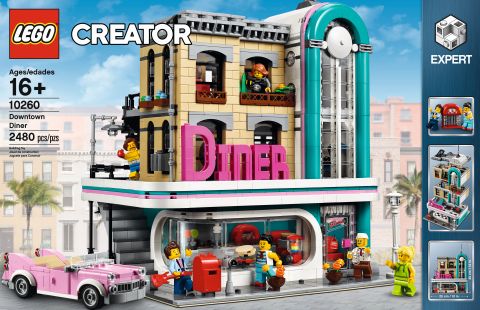
As we have discussed previously, what immediately catches the eye about the #10260 LEGO Creator Downtown Diner is its unique architecture. In the official set description, LEGO refers to the style as Streamline Moderne, which, according to Wikipedia, is a late type of Art Deco architecture and design that emerged in the 1930s. While the LEGO Creator Downtown Diner represents the style well, and it is definitely a fun looking set, there have been some concerns that the structure doesn’t match the other sets in the LEGO Modular Buildings series. It is true that the Downtown Diner is very different looking, it’s worth mentioning that Art Deco buildings tend to stick out as unusual in real life as well. People either consider them a sore thumb or a piece of art and architectural history. So, while we will have to wait until the set is released to make a final judgment, my guess is that the Downtown Diner will look just fine with the other Modular Buildings.
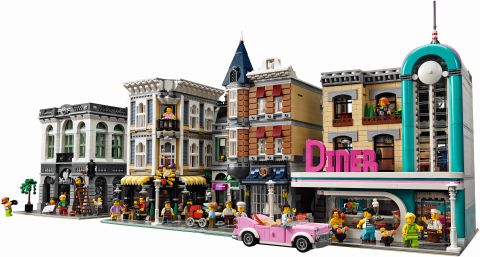
The architecture of the LEGO Creator Downtown Diner is not its only unusual and controversial feature. Switching from classic smiley faces to more expressive faces for the included minifigures is also causing quite a bit of discussion. Some LEGO fans are gladdened by the change, because it makes the LEGO Modular Buildings more in line with other modern LEGO sets. However, older LEGO fans who grew up with classic style minifigures, and those who have been collecting the LEGO Modular Building series from the very beginning are not so happy about it. To address concerns about the change, the LEGO Creator Expert team released an official statement: “Over the past 10 years our Modular Buildings have evolved in many ways. We’ve added more interior details, more story-telling, and more emotional triggers, such as unique decorations on windows and minifigure torsos. We now feel the time is right to bring the minifigure expression in line with all the amazing details now offered throughout our models. We have always loved the classic smiley face for its versatility and nostalgia value, but are now excited to explore the new possibilities expressive faces will offer us.”
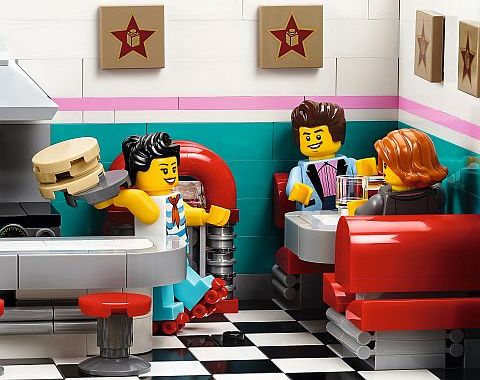
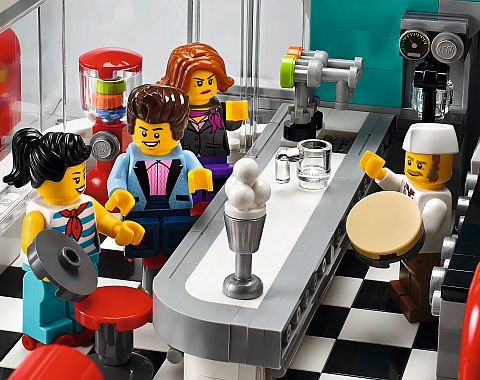
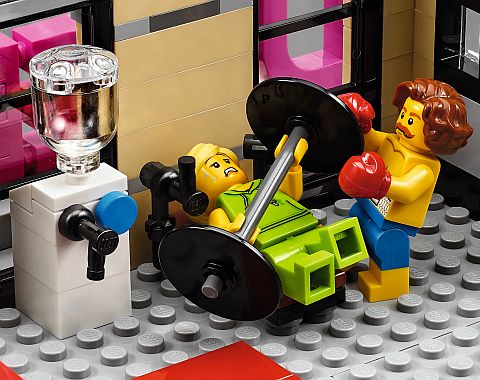
Then, there is the resurrection of teal (officially named bright-bluish-green by LEGO, and dark-turquoise in the BrickLink catalog). Teal was first introduced in the LEGO Technic and LEGO Rock Raiders lines of the late 1990s. The color was also used for the alien characters from the LEGO Space: Life on Mars series in the early 2000s, then it disappeared from production for well over a decade.
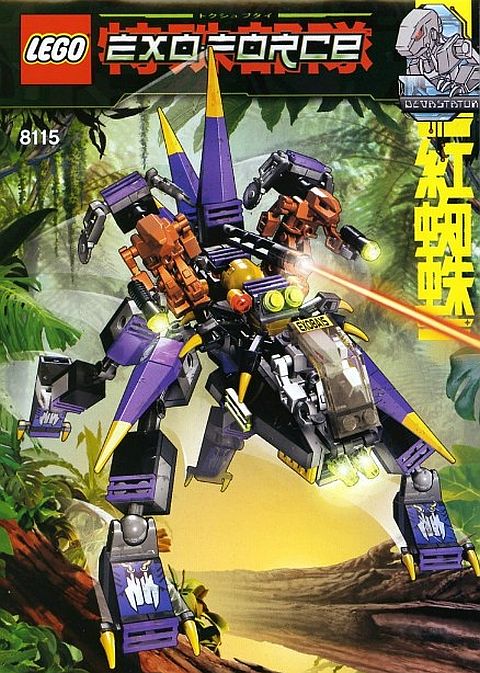
LEGO designer Mark Stafford is known as the person who killed teal. Mark tells the story that he was given four colors to choose from when designing the #8115 LEGO Exo-Force Dark Panther (see above); orange, red, purple and teal. If he chose orange or red, both purple and teal would be eliminated, if he chose teal, purple would be eliminated, and if he chose purple, teal would be eliminated. Mark chose the last option, and thus purple had to die (this was the time when LEGO was in the process of streamlining their inventory of parts and colors). Mark has been teased about this ever since, so I’m sure he is pretty relieved that teal is coming back after all these years. To celebrate the resurrection of teal, and to poke at Mark one last time, LEGO blog New Elementary is running a fun contest titled; How Might Mark Stafford Kill Teal Again? Check it out. I’m sure it will have great entries.
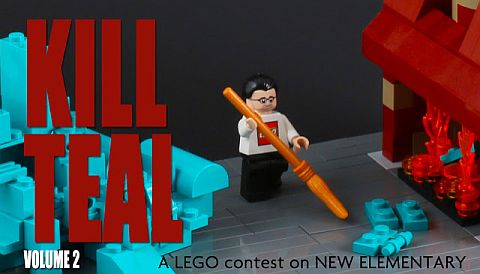
Of course, teal won’t be just included in the #10260 LEGO Creator Downtown Diner, and eagle-eyed LEGO fans already spotted it in a number of other 2018 sets. This includes the #41155 LEGO Disney Elsa’s Market Adventure, and all of the sets in the LEGO Elves line.
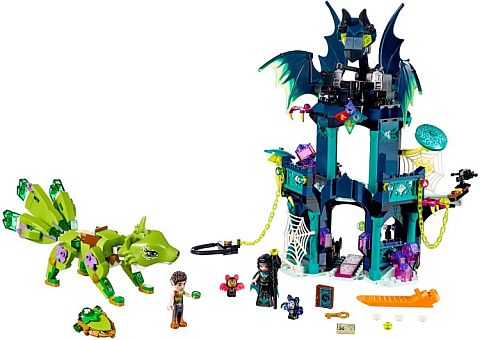
I actually find the revival of teal quite surprising. LEGO already has a great range of blues and greens, many of them introduced within the last few years. So, it’s not like teal was really needed at this time. In addition, teal is not a crucial color in any of the sets we have seen it appear so far – any of the other similar colors would have worked just as well. I’m wondering if there is something coming next year, where teal is going to be essential. This usually means a licensed set, where being faithful to the source-material is very important. Another interesting thing about the resurrection of teal is that while back in the 1990s it was pretty much exclusively used for vehicles and other mechanical sets, this time around it is applied as a decorative color.
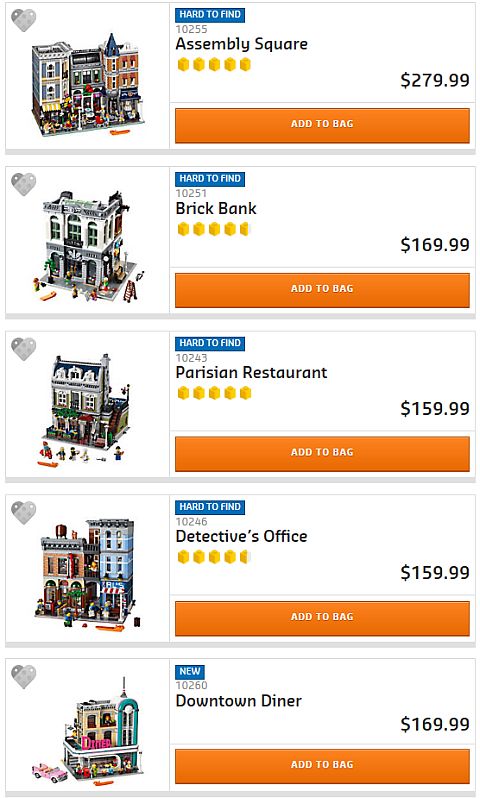
What do you think? How do you like the #10260 LEGO Creator Downtown Diner? And what do you think of the unique architecture of the building, the new style minifigure faces, and the resurrection of teal? Feel free to share and discuss in the comment section below! 😉
And you might also like to check out the following related posts:












I heard Teal might have played a role for a new Greedo minifig. (Although that sounds like a rather minor usage.)
I have heard that too. But they have been making Greedo for some time now using dark-turquoise and sand-green, and it seems like Disney was fine with that.
Teal is an interesting color. I would argue that it’s significantly different than the current blues and greens, so it makes sense to add it. Is teal replacing any of the other colors? Are any of them retiring?
Nah, it seems all the old standard colors will remain.
I’m not sure about any colors getting retired. I guess we will just have to watch the new sets and see if anything is missing.
I personally can’t say I’m bothered by the new minifig faces, but I hope for the sake of my Lego city they are able to get along! 😉
At least the old ones seem to be pretty pleased with the situation.
Well, the old minifigs can only smile, so they will get along. 😉
I like the architecture of the new building with the exception of the “Diner” sign. Not sure what, exactly, about it bothers me, but something does. I’m not despondent about the expressive faces, but I would have preferred to keep the old school smiley faces (and I’ll surely start hoarding them.)
I think teal is the right color for the jukebox look of the Diner. I don’t think any other color (except for maybe metallic silver) would look right. Not a huge fan of teal, though. Teal wasn’t even cool in the 90s–when it was ubiquitous.
I can’t wait to get the set, regardless.
It wasn’t that ubiquitous, although it was slightly more common… It was barely used outside of the Rock Raiders theme (for highlights) and Technic Competition/ Cyber Slam (where it admittedly was pretty common).
And occasionally in some of those colorblind Harry Potter sets…
I think OhioBricker was saying Teal was ubiquitous in the 90’s in general, like lime green in the 70’s.
Yeah, but he’s basically wrong. Particularly for basic parts.
It was also occasionally used for Duplo parts, though, and light Teal in a couple of more or less useless Scala parts.
Or, you mean outside of Lego…?
The color combination I abhor most from the 70’s is Brown and Orange, though… Murky and ugly…
And for the 90’s, I remember there were a lot of toys in garish colors in general – Lime, Teal, Magenta, Orange…
For the clothes, in Europe I think there was something of a “Rave Wave”, so there were lot of bright colors like Neon, Fleece material, Yellow, Orange, Red etc…
Then, in the noughties, things were toned down to primary colors, such as black, white and red… If my memory serves me…
Oh, that’s interesting! I haven’t considered how mainstream culture could effect the colors LEGO chooses. But now that you brought it up, and I think about it, it does make sense.
I think it’s great that Lego uses teal. In fact Lego should use as many different and unique colors as possible. It expands our imagination color pallet.
The only issue with too many colors is that it becomes difficult to build your own thing from the parts you acquired from sets. For example, right now there are two shades of tan. Say, LEGO would add five more. This means that it would become significantly harder to get enough parts of the same color for your own creations. LEGO has been pretty good at designing sets in such a way that the models look good, and the colors are limited to a smaller range. So a medium to large set provides a good bulk of parts in the same colors. If the same sets would include a greater variety of colors, it would take buying more sets to build up a significant quantity of single color. I like a rainbow of LEGO colors too, but too many colors would make the LEGO building system too messy and less useful for MOC-ers. (In fact, this is exactly the reason why you don’t see a whole lot of MOCs by Mega Construx fans. Mega doesn’t have a consistent color palette, so it’s very difficult to get enough parts in matching colors for custom projects.)
I wan’t some Reddish Orange and some Deep Bluish Violet …
I wan’t that they bring sand red back!
It seems sand red has been constantly under-used…
Yeah, and it’s such a beautiful color. I think this would be a good time for LEGO to bring it back, as they are releasing larger and more mature sets. Sand-red looks especially lovely with sand-green, sand-blue, and tan.
Oh, gosh! I would LOVE sand-red to come back! A Modular would look so amazing in that color!